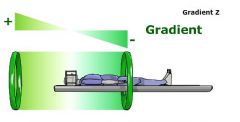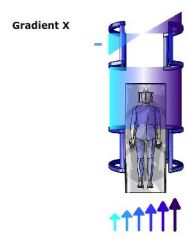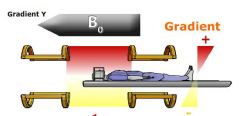![]()
![]()
![]()
Use LEFT and RIGHT arrow keys to navigate between flashcards;
Use UP and DOWN arrow keys to flip the card;
H to show hint;
A reads text to speech;
10 Cards in this Set
- Front
- Back
|
What are the 3 things that are required to know where a signal is coming from
|
First of all, the desired slice must be selected
Then, spatial information is encoded along the rows Finally, spatial information is encoded along the columns |
|
|
How is decoding of the MR signal done
|
Decoding of spatial information, included in the NMR signal as modifications of frequency and phase, is performed by an inverse Fourier Transform
|
|
|
What is used to determine the location of a slice
|
slice selection gradient (GSS)
|
|
|
Which in each slice selection gradient what is done to further pinpoint where the signal is coming from
|
Within this volume, the position of each point will be encoded vertically and horizontally by applying a phase encoding gradient (GPE), and a frequency-encoding gradient (GFE).
|
|
|
What is spatial encoding referring to
|
slice selection gradient
phase encoding gradient frequency encoding gradient |
|
|
What gradient is usually done first
|
First of all, a slice selection gradient (GSS) is used to select the anatomical volume of interest
|
|
|
How are the 3 different gradients the same and different
|
The different gradients used to perform spatial localization have identical properties but are applied at distinct moments and in different directions.
|
|
|
What is an example of a gradient in the Z-axis
|

Slice selection gradient
|
|
|
What is an example of a gradient in the X-axis
|

Left to Right
|
|
|
What is an example of a gradient in the Y direction
|

anterior posterior (relative to axial image)
|

